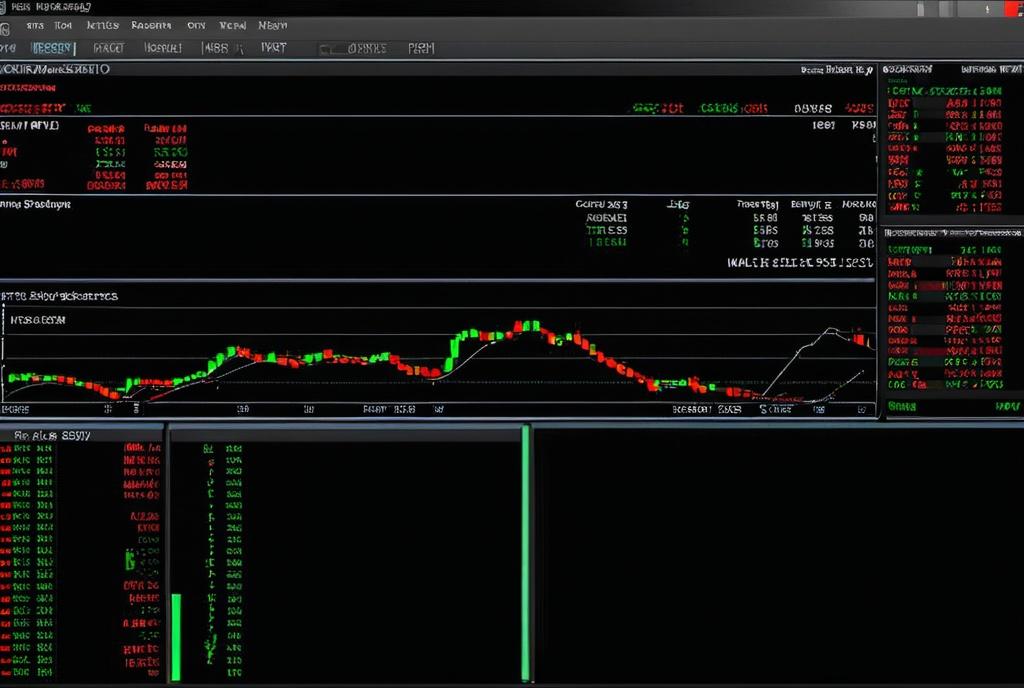Key Take Aways About Swing Trading
- Swing trading targets mid-term market trends, holding positions for days/weeks.
- Success relies on technical analysis and market sentiment, using tools like moving averages and MACD.
- Risk management is crucial; set stop-loss orders to protect against market volatility.
- Utilizing HIT software can streamline analysis and automate trades, reducing the need for constant monitoring.
- Traders should remain adaptable and prepared for market surprises.
- Swing trading demands patience, strategy, and risk management to be effective.

Understanding Swing Trading
Swing trading is like the middle child of trading strategies – living between the fast-paced craziness of day trading and the long-haul investment approach of buy-and-hold strategies. The basic idea is to spot an upward or downward trend in a stock or index and ride it to the middle of the wave, pocketing some gains on the way. Unlike day traders who might burn the midnight oil and stress over every tick in the market, swing traders usually keep their trades open for days or even weeks. If you’re thinking of sliding into this strategy, it’s all about the timing and market sentiment.
The Swing Trading Process
You might be wondering how to catch those trends like a pro. It’s not really a guessing game; it’s more about analyzing market behavior and spotting emerging patterns. Typically, swing traders use a mix of technical analysis, charts, and sometimes intuitive gut feelings to trace market movements. Imagine trying to find a rhythm in a line of noisy beats. That’s what swing trading is about – finding that rhythm.
Technical indicators like moving averages, relative strength index (RSI), and MACD (moving average convergence divergence) often come into play here. The whole point is to find highs and lows, the sweet spots where you can buy low and sell high. Sounds simple, right? But it definitely takes a bit of practice to get a handle on it.
Risks Involved
Like any trading method, swing trading isn’t without its pitfalls. Market fluctuations, unexpected news, or even the sudden popularity of a meme stock can mess up your plans. Therefore, it’s important to have a risk management strategy. This often involves setting stop-loss orders to minimize potential losses if a trade goes south.
Personal Insights on Swing Trading
Trying to juggle a full-time job and dabble in swing trading led me to appreciate weekends in a new way. Not because the market’s closed, which is nice for taking a break, but because it gave me time to review my strategy. One of the memorable moments was when I jumped on a trade following a rising trend, only for a larger market sentiment to flip it around. Lesson learned: always be ready for the unexpected twists and turns.
Leveraging HIT Software for Swing Trading
HIT software can be a swing trader’s best friend. It offers tools that simplify the analytical process, helping you identify those subtle market waves. With its user-friendly interface, you can easily plot charts, set indicators, and get alerts when certain market conditions are met. The automation features are a blessing, letting you execute trades without needing to hover over your screen all day.
Why HIT Software?
HIT is designed to cater to traders at different levels. Whether you’re a newbie or a seasoned trader, there’s something in it for you. The software’s algorithms can help streamline your trading strategy, offering analytical insights and real-time data. You can customize alerts to stay updated without having to constantly monitor the market.
Real-Life Example
A fellow trader once shared how she used HIT to turn her trading around. She configured her indicators, set her alerts, and was able to spot an emerging trend during her lunch break. With a few clicks, she placed a trade that yielded a tidy profit by the week’s end. HIT took some of the stress out of the equation, allowing her to focus more on strategy than on execution.
Conclusion
Swing trading is not just for the thrill-seekers of the trading world. It’s a strategic approach that requires patience, a keen eye for trends, and a good grasp of market indicators. With tools like HIT software, the process is made less cumbersome, allowing traders the freedom to make informed decisions without drowning in data. If you’re thinking of diving into swing trading, remember to keep a balanced view of your strategies, manage your risks carefully, and, most importantly, enjoy the ride.
